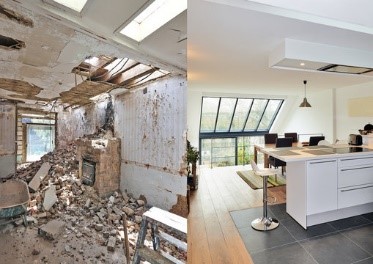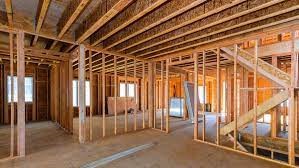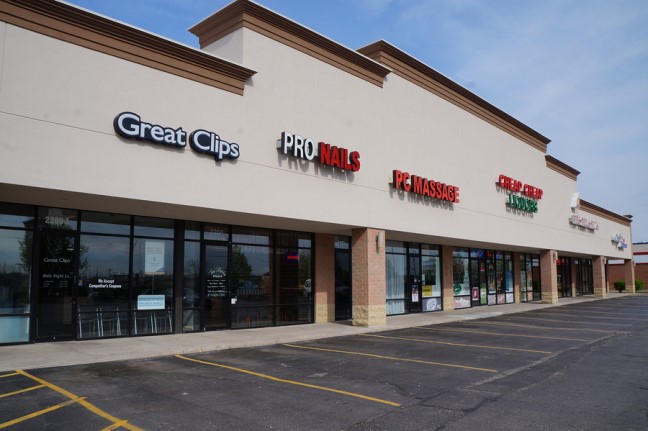Real Estate
The Harvest Agency
Real Estate
- Homes values are determined by either:
- 1. Actual Cash Value (ACV)- Defined as the cost to replace something with like kind or quality, AFTER DEDUCTING depreciation.
- 2. Replacement Cost - Defined as the cost to replace something with like kind or quality, WITHOUT DEDUCTING depreciation.

Vacant/Rehabs (Renovation/Remodeling)
Due to the increased risk of loss associated with vacant properties, it is crucial to have proper insurance coverage specifically tailored for vacant properties until they are occupied.
It is important to be aware that insurance companies typically classify vacant or homes under renovation as vacant properties. This information holds significance since theft is typically excluded from coverage for vacant properties. DP1 policies are typically the only type of insurance coverage available for vacant properties.
Multiple insurance carriers provide policy forms such as DP1, DP2, and DP3. In case you are uncertain about their distinctions, here is a summary outlining the coverage provided by each policy.
DP1 (Dwelling Fire 1) - Very Basic Protection
This is a named peril policy that includes the perils of fire, lightning, and internal explosion for Coverages A and B. The limited perils on a DP1 make it a Basic or Named Form Policy.
Optional perils: For an additional premium, Extended Coverage may be added to a DP1. Extended Coverage, also referred to as EC, includes:
- Fire & Lightning
- Internal & External Explosion
- Windstorm & Hail
- Riot or Civil Commotion
- Aircraft
- Vehicles
- Volcanic Explosion
Optional Peril: For an additional premium, Vandalism and/or Malicious Mischief may be added.
Most carriers require that you add these perils in order – in other words, you can have a DP1, or a DP1 with Fire and EC, or a DP1 with Fire, EC and VMM.
Loss settlement for a DP1 is ACV for Coverages A and B. Some carriers offer endorsements to change loss settlement to repair or replacement cost.
Let’s say for example that a hailstorm rips the roof off your rental property, and you need it replaced. If the roof is 15 years old, the materials originally used on the roof are very old and aren’t worth very much. If it cost you $10,000 to replace the roof 15 years ago, the insurance company may only give you $5,000 to replace the roof now, because the materials have depreciated by 50% (in this example).
DP2 (Dwelling Fire 2) – Average Protection
This is also a named peril policy, but it includes more perils than a DP1. The DP2 is a Broad Form policy. It provides adequate coverage for most landlords.
Perils include:
- Fire
- Lightning
- Internal & External Explosion
- Windstorm & Hail
- Civil Commotion
- Smoke
- Aircraft & Vehicles
- Volcanic Eruption
- Riot
- Vandalism & Malicious Mischief
- Burglary Damage
- Weight of Ice & Snow
- Glass Breakage
- Accidental Discharge or Overflow of Water or Steam
- Falling Objects
- Freezing of Pipes
- Electrical Damage
- Collapse
- Tearing Apart, Cracking, Burning, Bulging.
Loss settlement for a DP2 is replacement cost for Coverages A and B. If anything happens to the property that is not included on this list, the policy will not insure the damage, and it will not receive coverage.
It is important to note that most DP2 insurance policies will not cover a majority of the perils listed in the policy if the home has been vacant for a period of time. In a typical DP-2, the length of time the home can be vacant and still receive full insurance is either less than 30 or 60 days, depending on who is writing the policy.
DP3 (Dwelling Fire 3) - All Risk Protection
This policy is categorized as an open, special peril, or comprehensive policy. In the insurance industry, these terms are interchangeable and signify that all perils are covered unless they are explicitly excluded. Therefore, it can be referred to as a Special Form policy.
Some of the Qualifications for this coverage are:
- Homes 80 years old or newer
- Roof 20 years old or newer
- Protection classes cannot exceed 1-10 (must be within fire hydrants and fire departments)
- Vacancy
- No homes with asbestos
Exclusions of the DP3 Insurance Policy
The following perils are the most common perils that are excluded from DP-3 insurance coverage:
- Ordinance or Law
- Earth Movement
- Water Damage (some may be included in the policy)
- Power Failure
- Neglect
- War
- Nuclear Hazard
- Intentional Loss
- Governmental Action
- Mold (some may be included in the policy)
Loss settlement for a DP3 is replacement cost on Coverages A and B.
Coverage C – Contents
On all Dwelling Fire Forms, Coverage C is optional, and is generally used to cover Landlord Furnishings.
Coverage D – Loss of Use
For tenant occupied rental properties, Loss of Use Coverage includes Loss of Rent, an important detail for owner of rental properties.
Builder’s Risk (Under Construction/ Renovation)
A builder’s risk insurance policy is for property owners, contractors, and others responsible for insuring commercial and residential properties during construction.
Since losses cannot always be avoided, it is wise to mitigate risks by acquiring insurance for construction projects. With builder’s risk coverage, you’ll have the protection you need – and the service you expect – to keep your operations going.

PROGRAM COVERAGE HIGHLIGHTS
- Replacement Cost (Special Form)– covers all perils except those that are specifically excluded.
- Theft coverage included- A leading cause of claims on all eligible project types.
- Wind and Sewer Backup included.
- Ordinance or Law- Coverage for losses caused by the enforcement codes, laws, or ordinances in force at the time of loss.
- Debris Removal
- Pollutant Cleanup and Removal
- Architects and Engineering Expenses- Coverage to include expenses that you incur following a covered cause of loss.
- Transit- Coverage of building materials, supplies, and equipment loss in transit.
- Contractor’s Earned Profit- Reimbursement for the proportional percentage of profit earned up to the date of loss, based on the profit assumptions in the initial job estimate, ensuring protection for both income and investment.
- Vacant Building- Coverage prior to onset of project built into form to accommodate start delays.
- Additional Vacant Building- Coverage after projection completion incorporated to cover risk while awaiting occupancy/sale.
- $10,000 Personal/Business Personal Property coverage
- Initial policy term options of 6 or 12 months
- Low minimum premiums
- Agency or direct billing available
Lessor’s Risk (Commercial Landlord)
A lessor’s risk policy, also known as a commercial landlord insurance policy or lessor’s liability insurance, is a type of insurance coverage specifically designed for property owners who lease or rent out their commercial properties to tenants.

PROGRAM COVERAGE HIGHLIGHTS
It provides protection for the property owner against various risks associated with renting out the property, such as:
- Blanket Coverage or 125% Extended Replacement Cost
- Building or Property damage (including business personal property)
- Liability Claims
- Water Back-Up and Sump Overflow
- Ordinance or Law
- Equipment Breakdown
- Business Income- Loss of rental income up to 12 months in the event of a loss.
- Legal expenses
It provides protection for the property owner against various risks associated with renting out the property, such as:
Ready To Protect Your Lifestyle?
We provide the coverage and protection you need so you can focus on what matters most.







